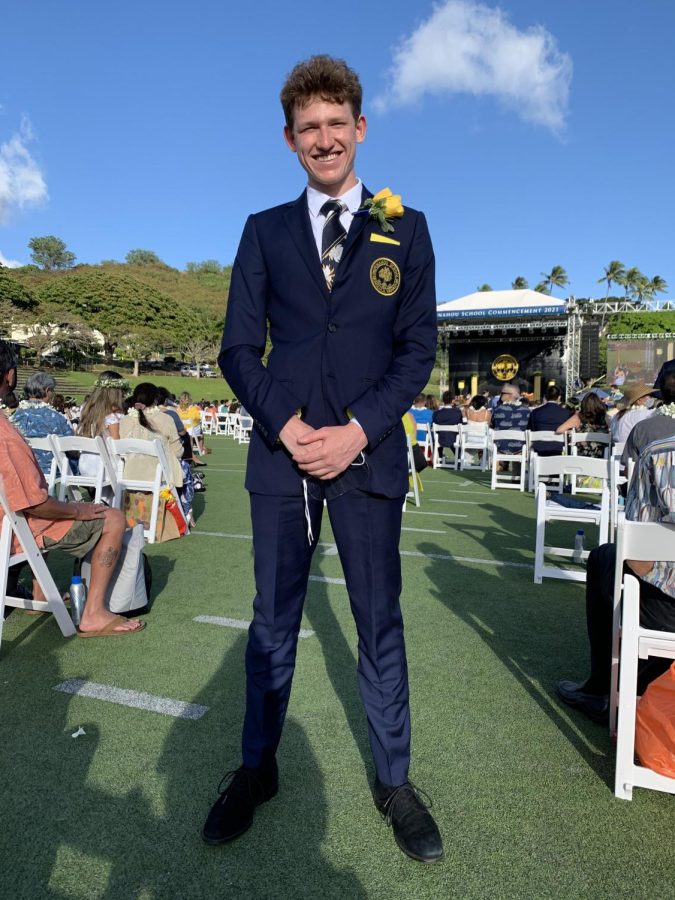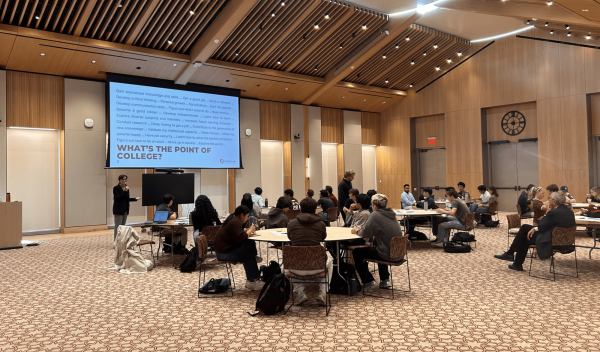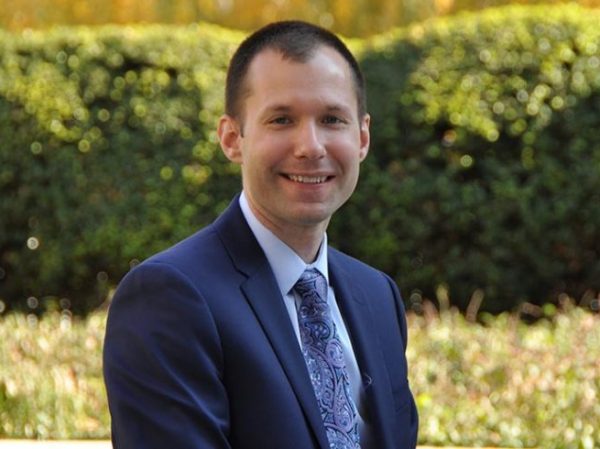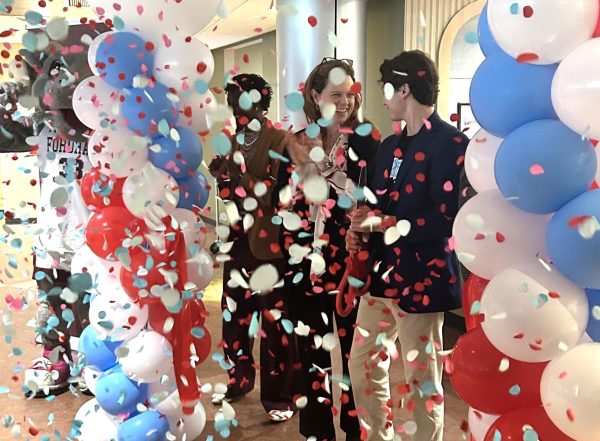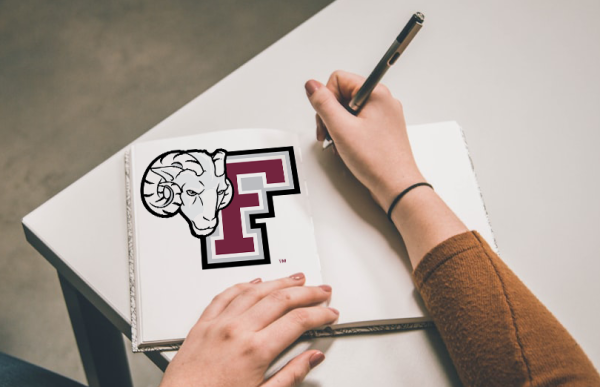Sophomore Researches Physics Curriculum
Jackson Saunders, FCRH ’25, said that he wants to make introductory physics lab courses at Fordham more engaging and effective. Over the summer, he conducted research on the current physics education and curriculum.
Saunders is double majoring in physics and philosophy and co-authored the latest lab manual that the school is using for its introductory physics course. Now he is working as a teaching assistant in that lab class. Using standardized tests called conceptual inventories, Saunders can compare between a traditional introductory physics class and this newly designed lab course. He found that students learned more throughout the semester in the newer course, and they enjoyed the class more.
In this lab course, Saunders applied a specific instructional framework known as peer instruction. Instead of a traditional classroom setting where the professor lectures to the students, Saunders explained that peer instruction involves focusing on student engagement with each other within the classroom. In peer instruction, the students go through pre-prepared, supplementary course material with each other while both the instructor and teaching assistants are present.
“What we find is that when the focus is placed on that peer-to-peer interaction, students tend to learn better…they learn more and they learn it more in depth,” said Saunders.
While this framework has been applied to the lecture classes and the recitation classes in other schools across the country, Saunders wanted to see how it would function in the introductory lab class here at Fordham.
To measure the effectiveness of this peer instruction-oriented lab class, Saunders is using two main tests. The first one is called the Colorado Learning Attitudes about Science Survey (CLASS), a standardized metric to see if students enjoyed learning science more. It also tests whether or not students learned the material better if they enjoyed learning more. The other test that Saunders is employing is called the Force Concept Inventory (FCI), which is given to students before and after taking the class in order to measure how well students actually learned the specific concepts that are being taught in the course. These tests will also be compared to traditional lab classes.
Being a physics major himself, Saunders took this introductory class at Fordham and noticed some problems with how the course currently operated. The most glaring problem he noted was that he found the course was unengaging for students. It was difficult for them to sit there and do the work. Previously, Saunders had also worked as a physics teaching assistant at his high school, where the students were taught using this peer instruction framework.
“So I came to college, and I’m sitting in these 40-person lecture classes, and it just feels terrible; it takes so much more effort and you don’t get as much out of it. As someone who wants to major in it and who loves physics, that was so painful … I really like the field and I wanted more people to enjoy it,” said Saunders.
In order to rectify this issue, Saunders reached out to his advisor, Christopher Aubin, Ph.D, to see if he could research a method of re-working the course to make it more engaging.
For the first part of his research process, Saunders conducted an extensive literature review of existing material that had been written about physics instruction, trying to figure out what works in the classroom and what doesn’t. However, Saunders quickly realized that while the information he learned was valuable, he needed to focus more specifically on the introductory lab itself and how to improve it. Then, he started working on writing the lab, doing things like creating his own diagrams from scratch and sending them to Aubin for editing.
From his work as a teaching assistant, Saunders says that he has already noticed a significant difference between the class that he took and the newly designed class.
“When I took the class, you just talked to your lab partner. What I’m seeing in this class is sometimes you’ll have this mass glob of like eight students, all trying to figure out the same problem, and you see them doing exactly what the literature describes, which is arguing and debating what the correct answer is,” said Saunders.
Saunders thinks that in terms of collaboration, efficacy of communication and enjoyment, there is something qualitatively different about this newly designed course and the one that he took previously at Fordham. Although this topic is something that Saunders is really interested in continuing to study in the future, he recognizes some of the underlying problems that make it a difficult goal to achieve. Often, Saunders feels like professors don’t take the concerns of undergraduate students seriously, making widespread physics education reform a tough task to accomplish. However, this has also been a rewarding experience for Saunders in some respects.
“It’s really cool to see them looking at the material that I created, and then learning from it; it’s a really rewarding and gratifying feeling,” Saunders said.





































































































































































































